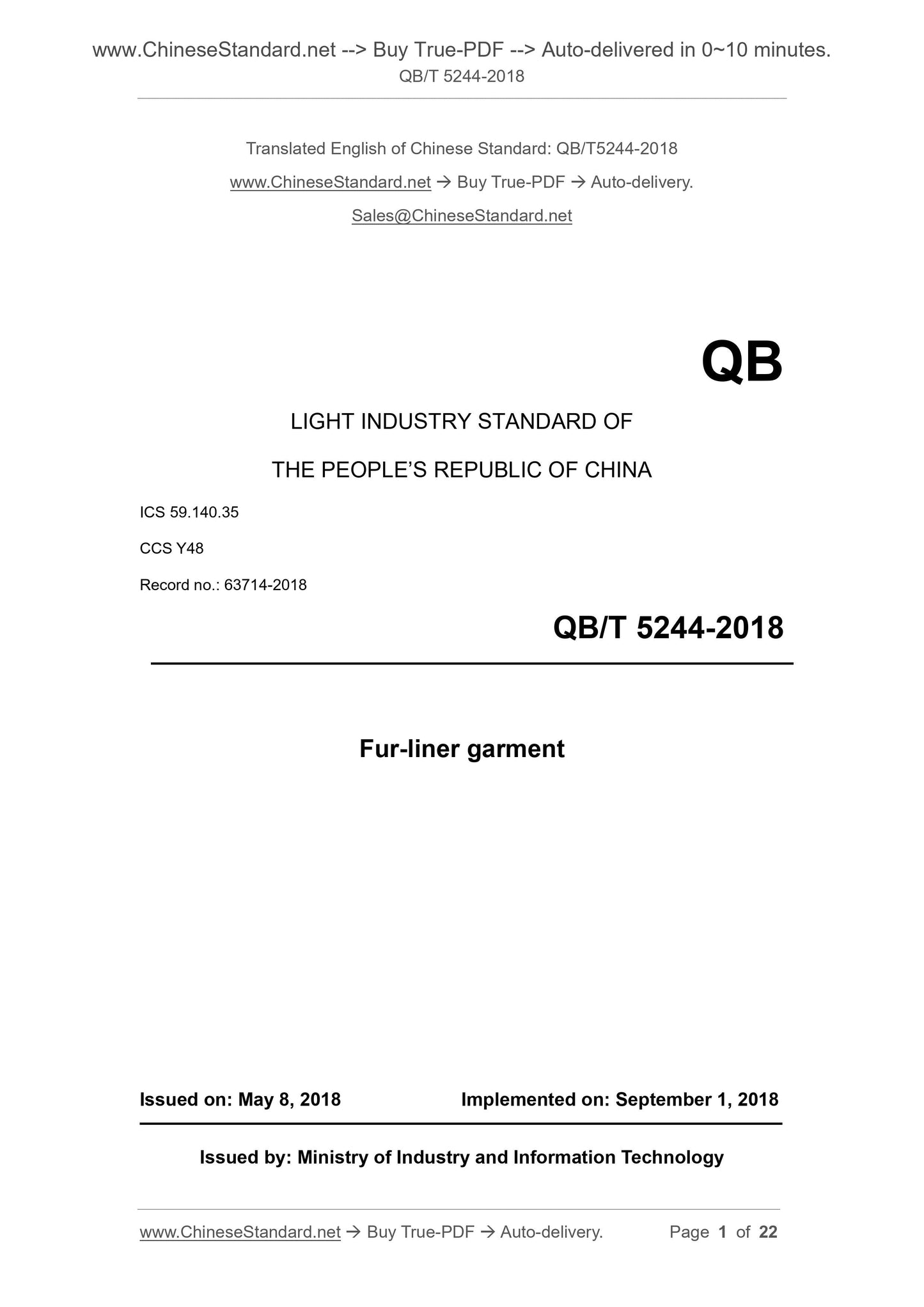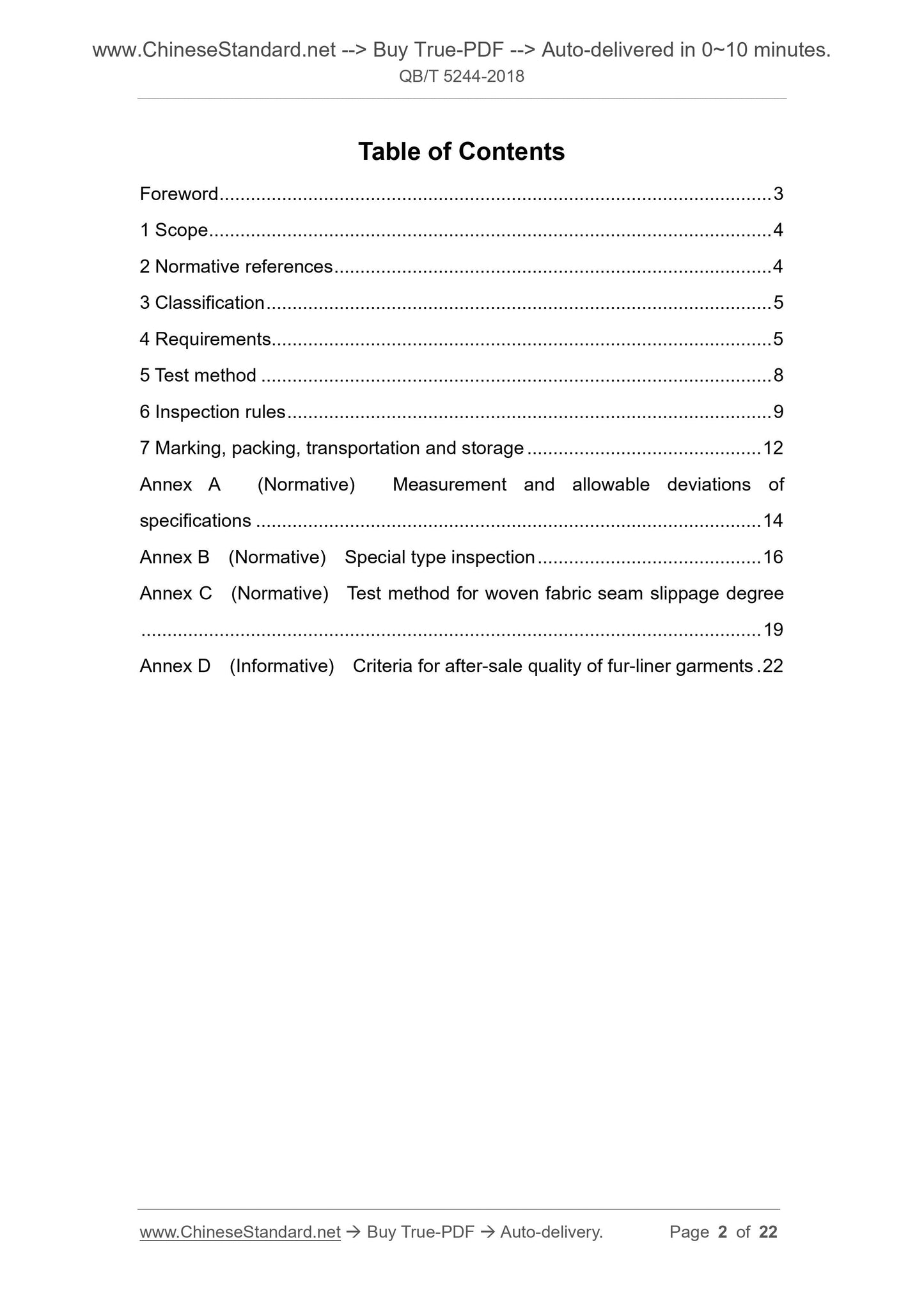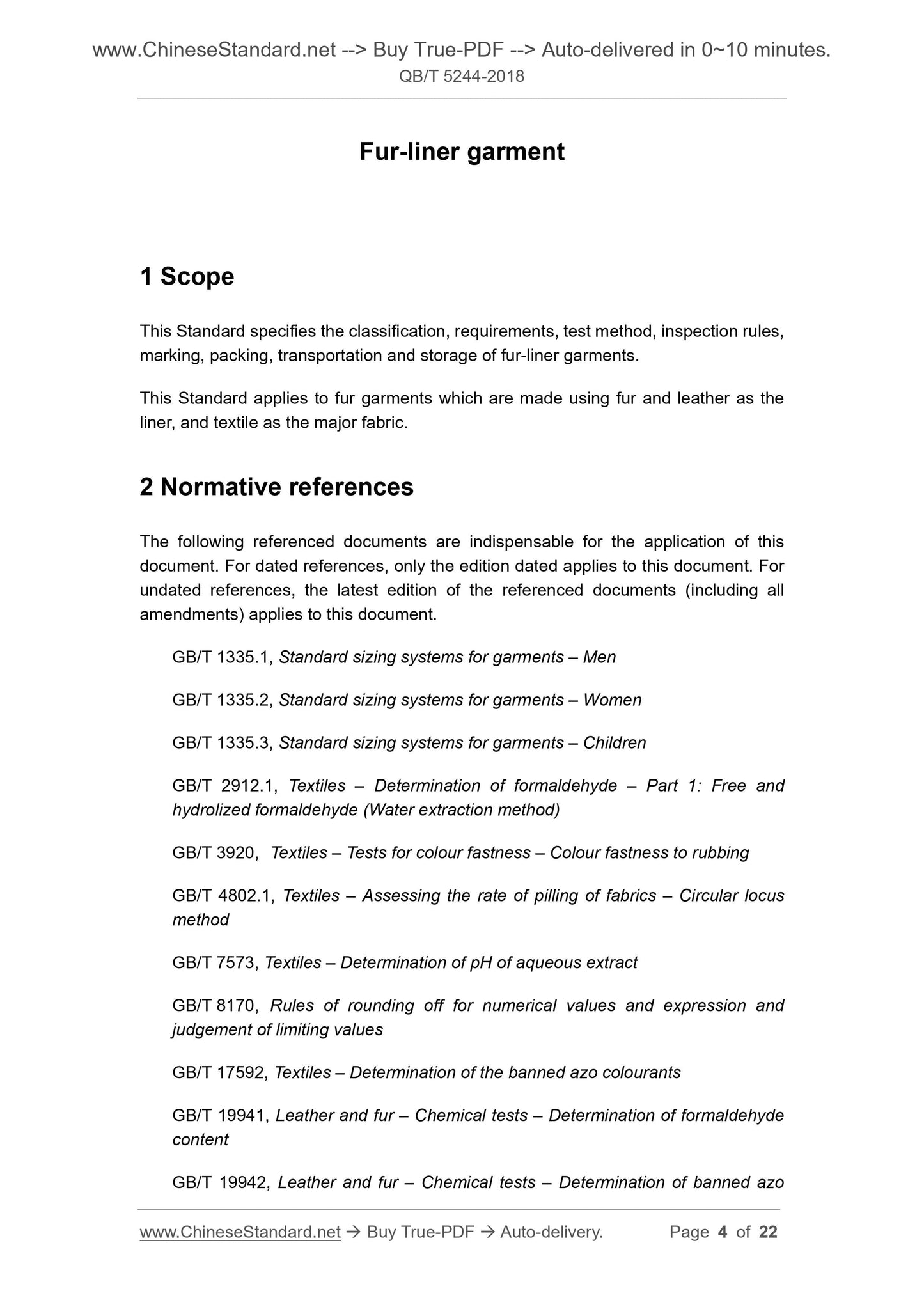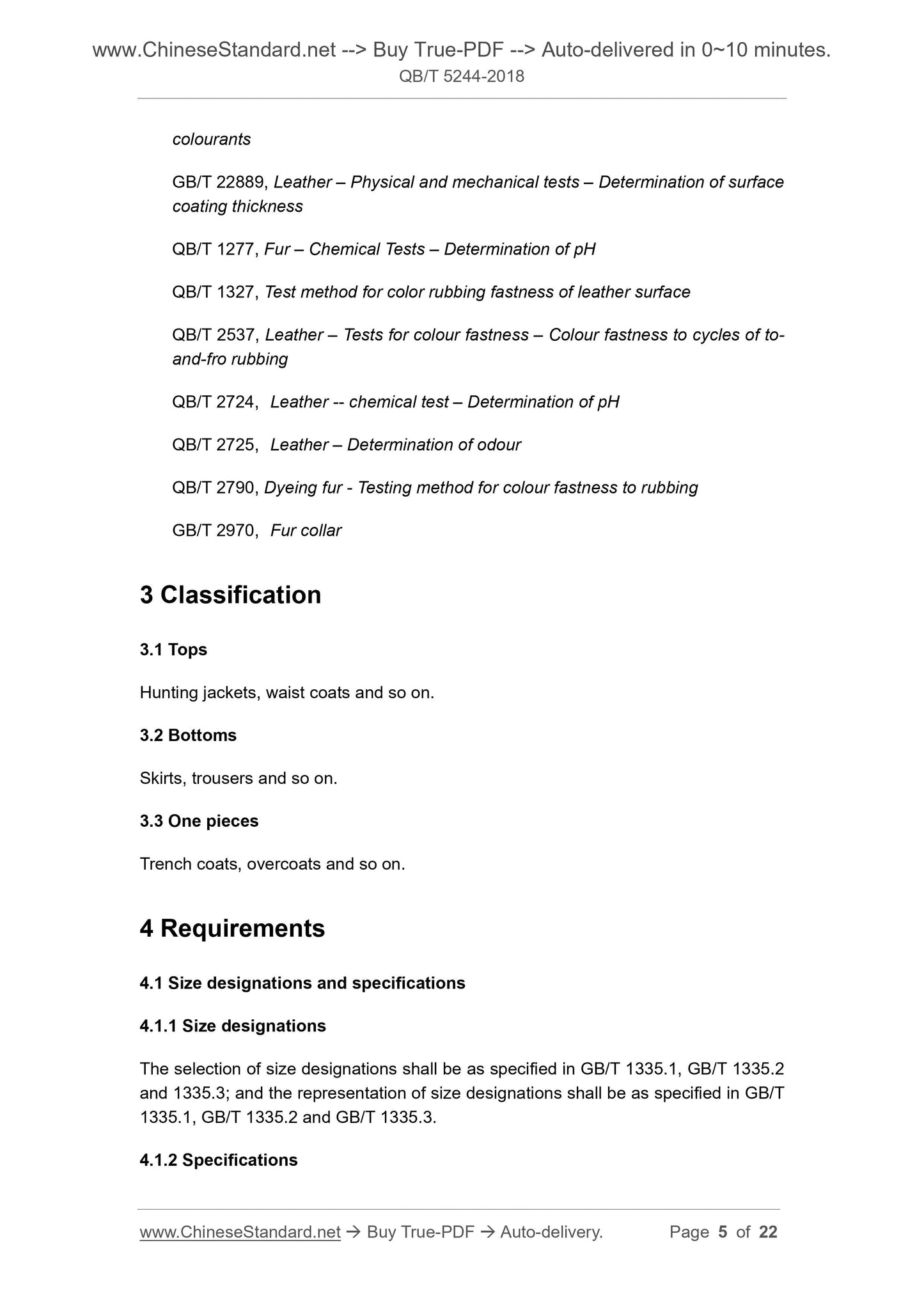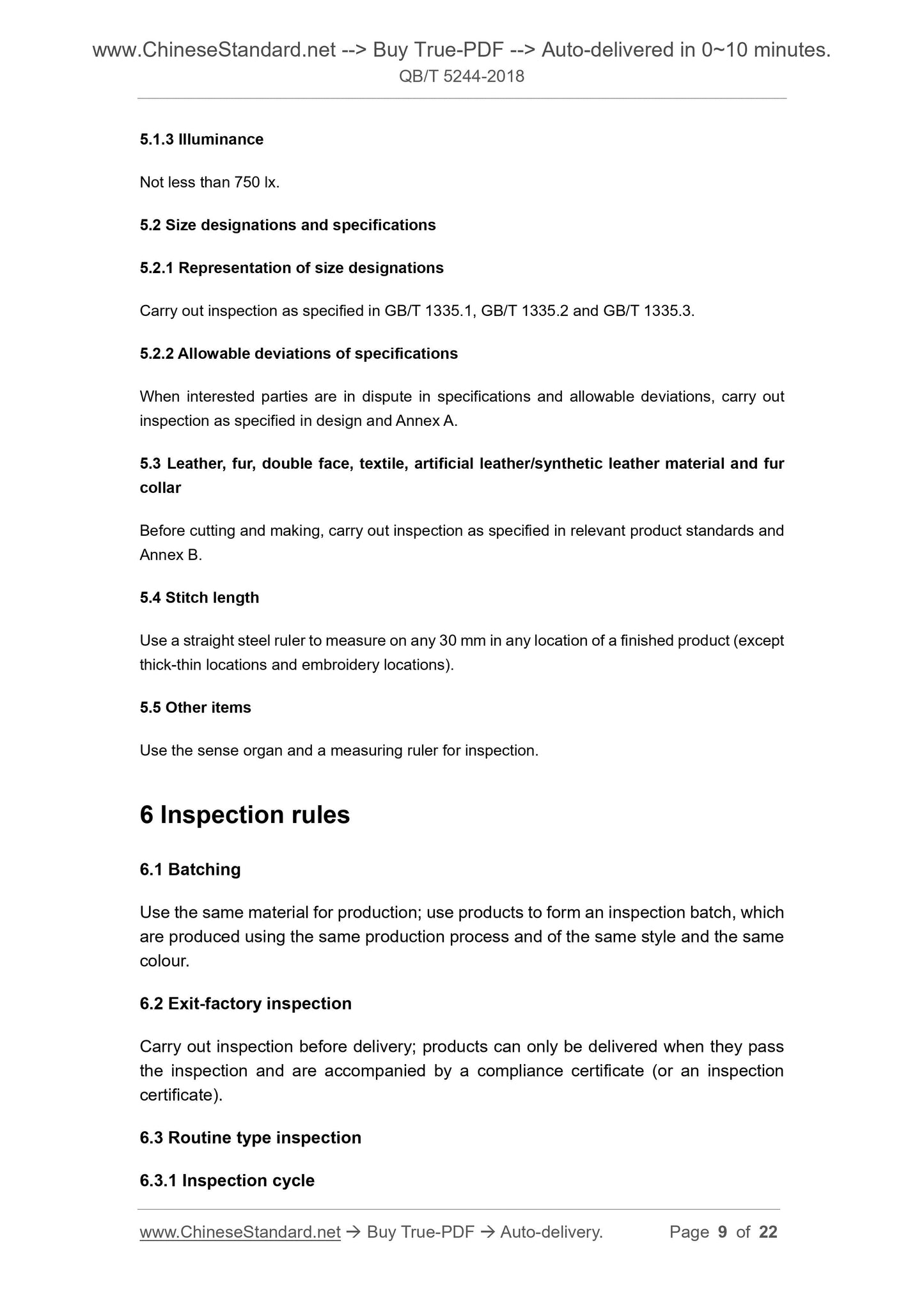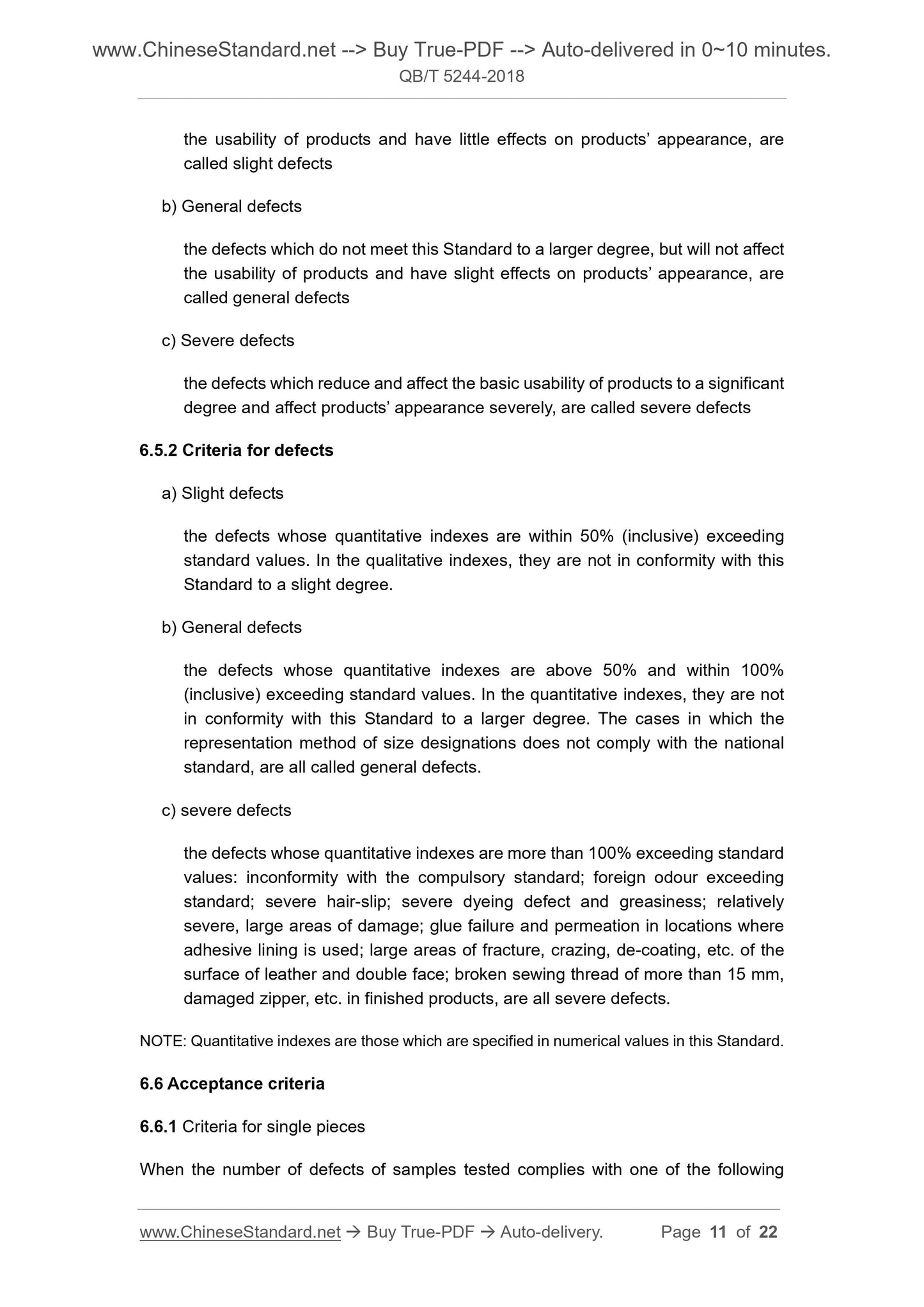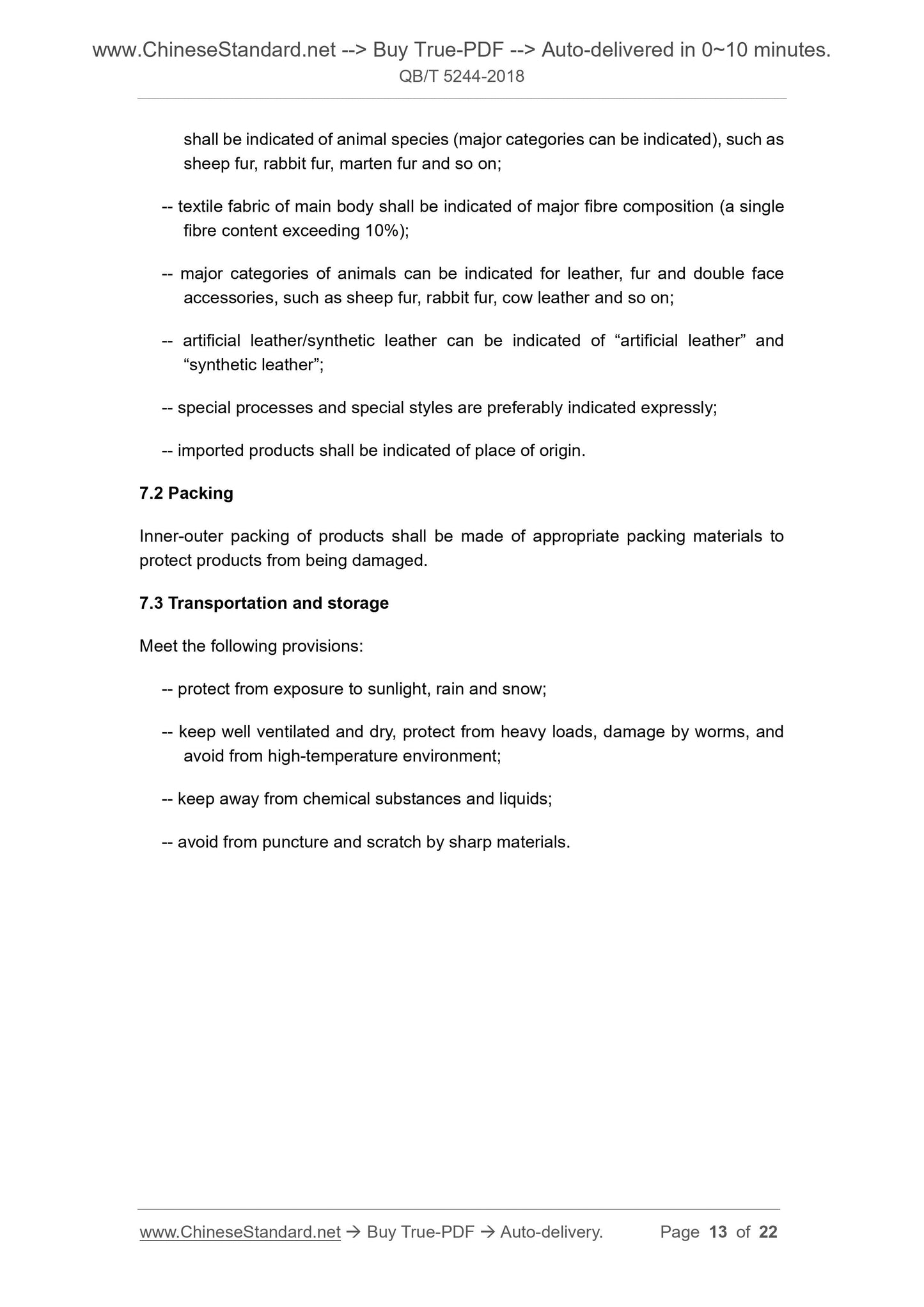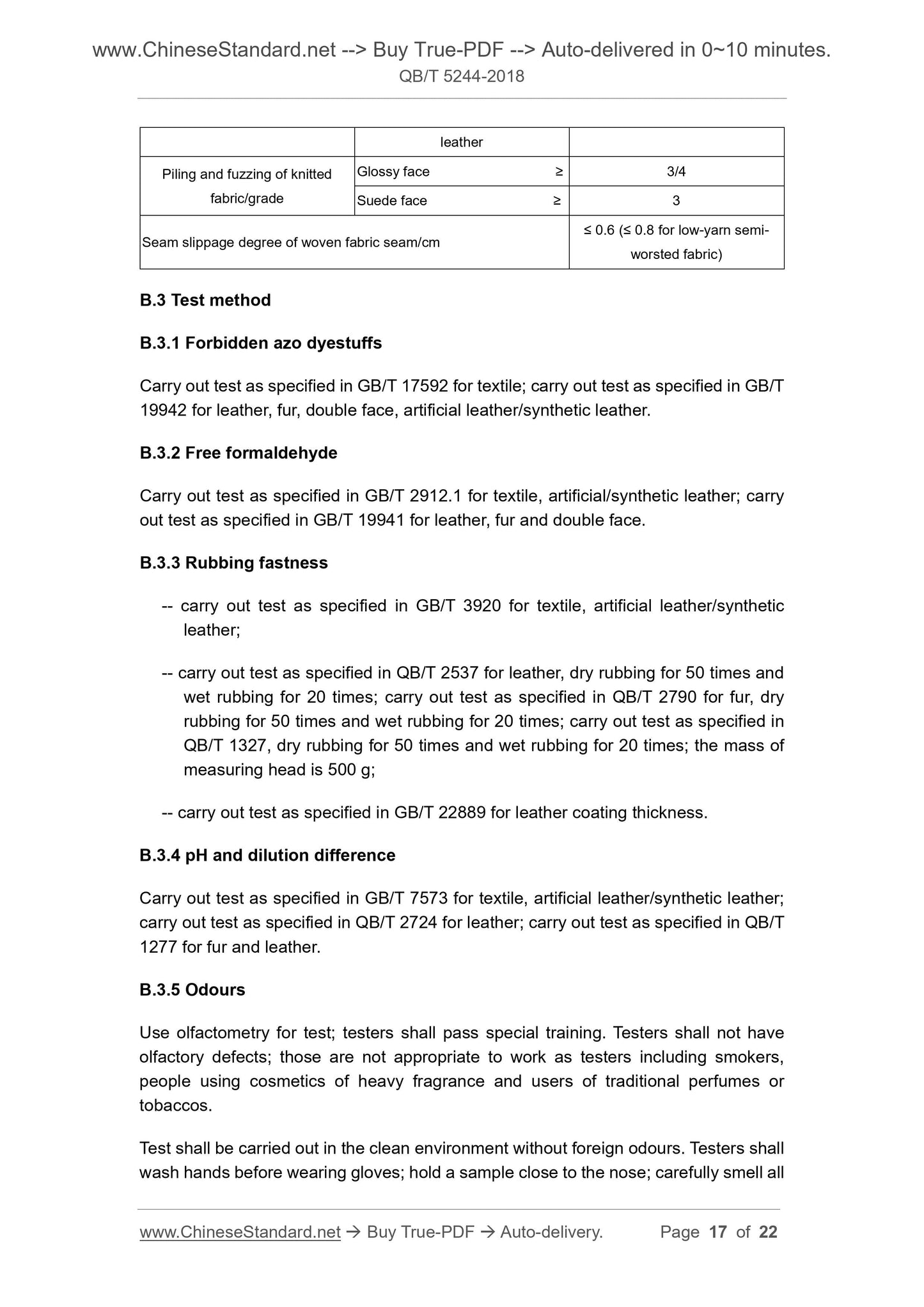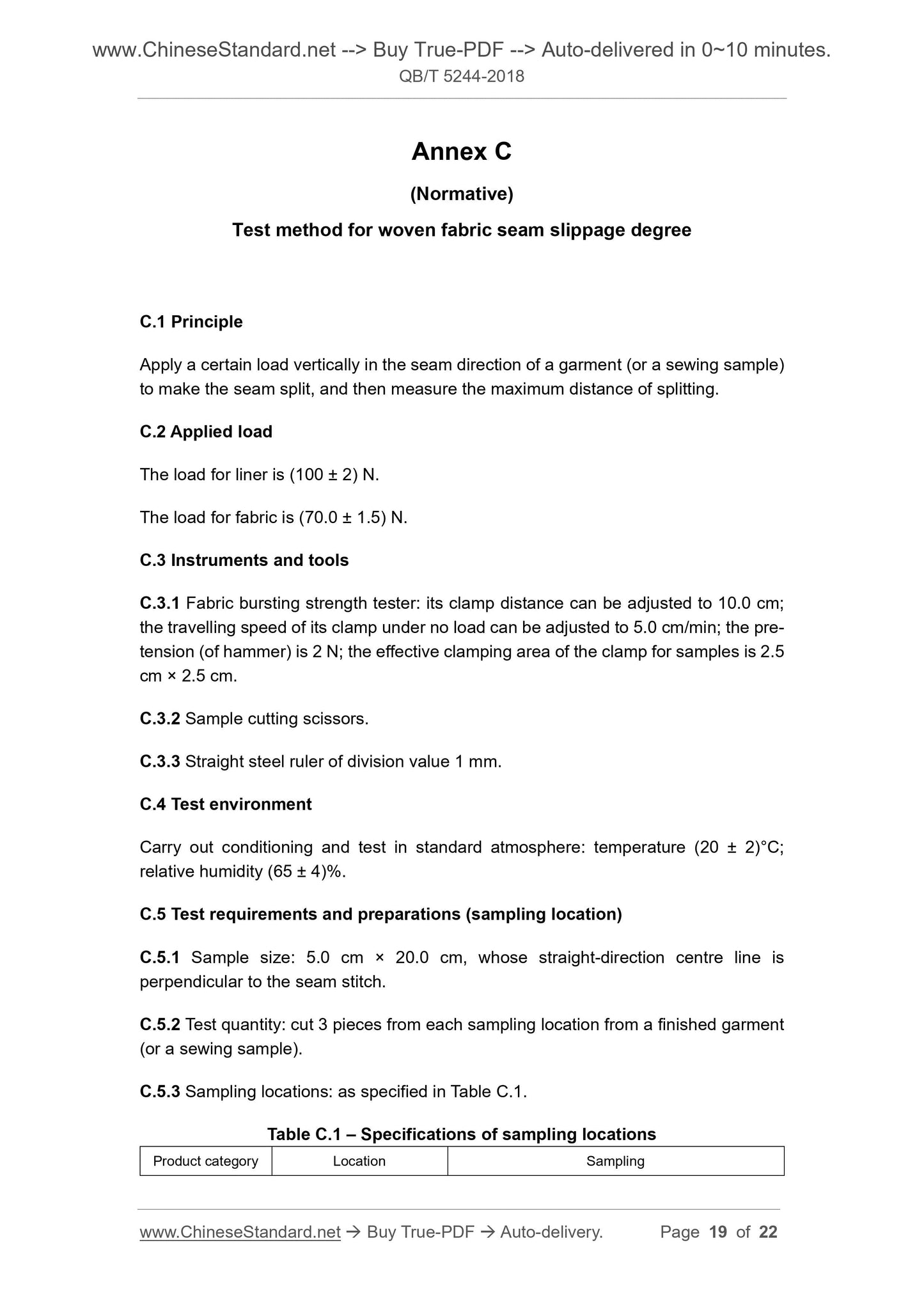1
/
of
9
www.ChineseStandard.us -- Field Test Asia Pte. Ltd.
QB/T 5244-2018 English PDF (QB/T5244-2018)
QB/T 5244-2018 English PDF (QB/T5244-2018)
Regular price
$150.00
Regular price
Sale price
$150.00
Unit price
/
per
Shipping calculated at checkout.
Couldn't load pickup availability
QB/T 5244-2018: Fur-liner garment
Delivery: 9 seconds. Download (and Email) true-PDF + Invoice.Get Quotation: Click QB/T 5244-2018 (Self-service in 1-minute)
Newer / historical versions: QB/T 5244-2018
Preview True-PDF
Scope
This Standard specifies the classification, requirements, test method, inspection rules,marking, packing, transportation and storage of fur-liner garments.
This Standard applies to fur garments which are made using fur and leather as the
liner, and textile as the major fabric.
Basic Data
| Standard ID | QB/T 5244-2018 (QB/T5244-2018) |
| Description (Translated English) | Fur-liner garment |
| Sector / Industry | Light Industry Standard (Recommended) |
| Classification of Chinese Standard | Y48 |
| Word Count Estimation | 16,148 |
| Date of Issue | 2018-04-30 |
| Date of Implementation | 2018-09-01 |
| Regulation (derived from) | Ministry of Industry and Information Technology Announcement No. 23 of 2018 |
| Issuing agency(ies) | Ministry of Industry and Information Technology |
| Summary | This standard specifies the product classification, requirements, test methods, inspection rules, marking, packaging, transportation and storage of suspended fur garments. |
Share
